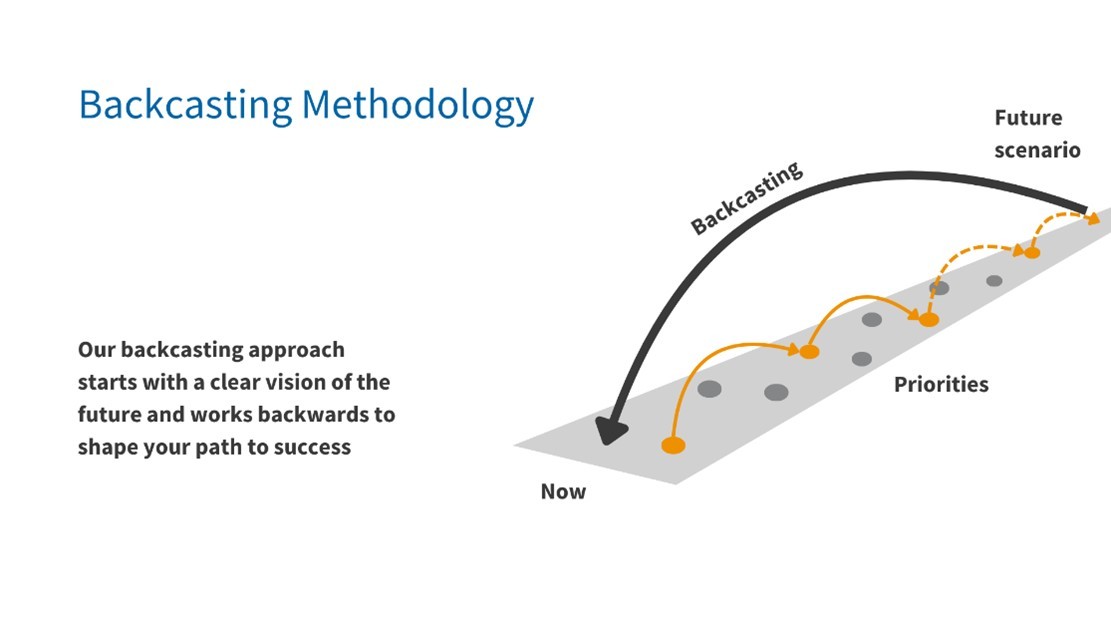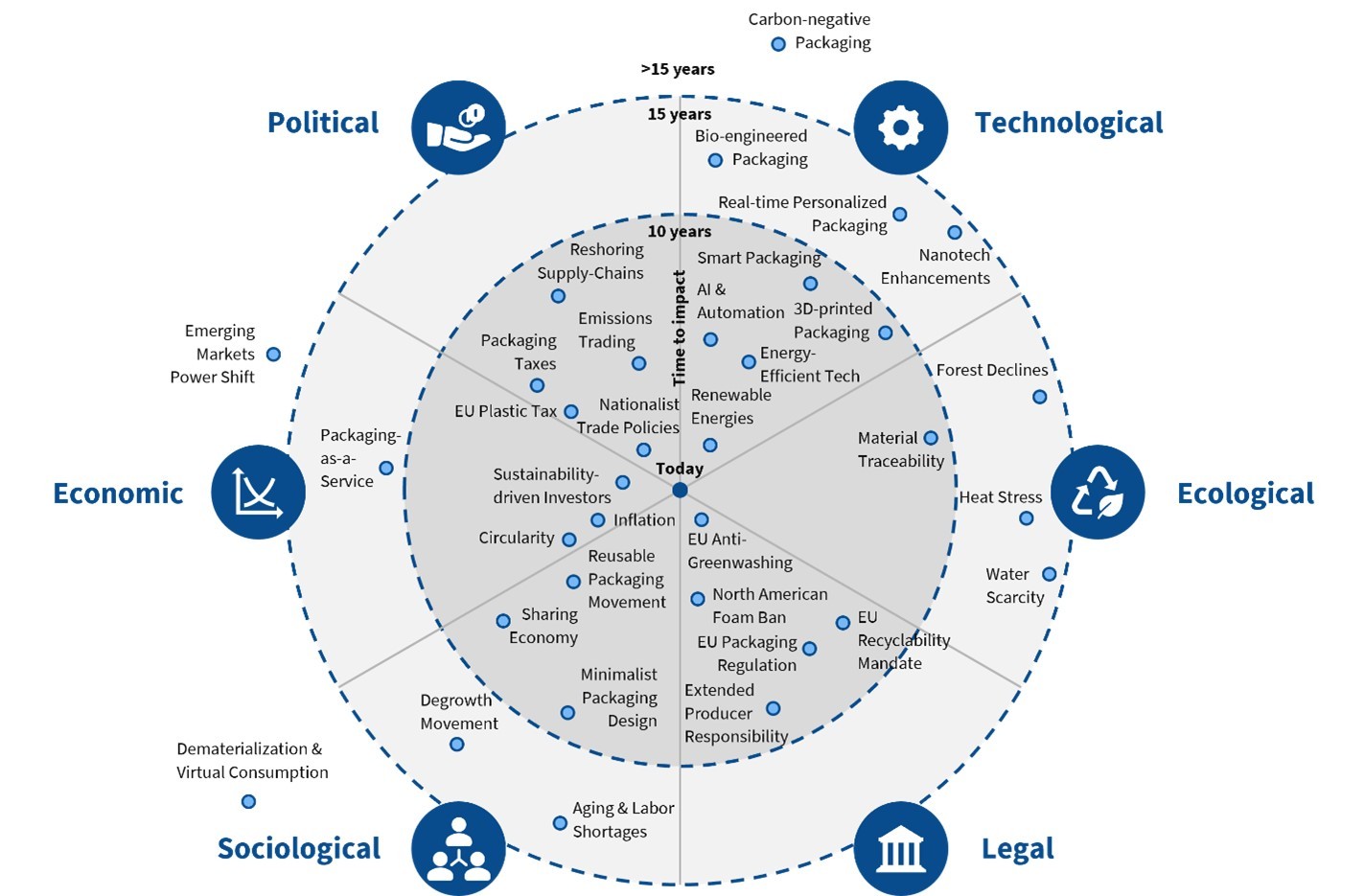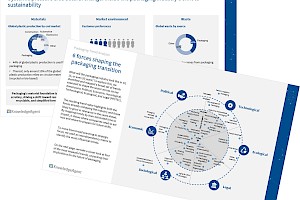As sustainability pressures mount, companies can no longer afford to treat the future as a distant horizon. Climate risk, shifting consumer expectations, resource constraints, and regulatory transformation are already reshaping the competitive landscape.
In response, many organizations are embedding sustainability into their strategies. But sustainability alone isn't a strategy. It's a direction – and direction requires structure.
That’s where strategic foresight comes in.
Moving from short-term fixes to long-term futures
Strategic foresight helps organizations explore how different futures might unfold. It shifts focus from reacting to what’s likely, to preparing for what’s possible and steering toward what’s desirable.
Combined with sustainability, foresight becomes more than a planning tool. It becomes a lens for designing future-ready business models.
Consider, for example, an organization aiming to reduce its carbon footprint. A strategy based solely on current regulations or technology benchmarks may fall short. But one that considers long-term material innovations, new market dynamics, and changing legal frameworks can identify smarter investments and more resilient pathways.
Planning backwards from the future: A backcasting approach
One method we apply frequently in this context is backcasting.
Rather than projecting current trends forward, backcasting starts by defining a clear, normative vision – such as a circular, regenerative, and intelligent packaging system by 2050 – and works backward to define the necessary strategic milestones.
It is especially effective when the status quo must be fundamentally rethought. In our recent case study on the packaging industry, we used backcasting to explore how a company might connect a 25-year vision with near-term decisions, despite uncertainty and disruption.

A scenario for the future of packaging
The packaging industry is confronted by a growing need to eliminate waste, reduce emissions, and shift to circular systems. At the same time, it must remain cost-efficient, operationally reliable, and responsive to customer demands.
In the case study, we explored one possible transformation scenario for the sector. It is based on a vision of 2050 where packaging no longer generates waste, value chains are ecosystem-based, and next-generation materials dominate the market.
To make this tangible, we looked at Huhtamaki, a global packaging company already engaged in sustainability innovation, as an illustrative case. The result is not a definitive prediction, but an exemplar of what long-term alignment might look like in practice.
From vision to action with three strategic phases
We break down the vision into tangible phases, each representing a shift in capabilities, practices, or market conditions. By making the abstract concrete, these milestones serve as guideposts for navigating complexity:
By 2030: Sustainable inputs
- Scale R&D into sustainable materials
- Transition to 100% renewable energy upstream
- Secure financing from sustainability-driven investors
- Begin building cross-tier circular ecosystems
By 2035: Sustainable production
- Pilot advanced materials like edible or molded fiber packaging
- Roll out digital tools to guide consumers in reuse and recycling
- Upgrade production to support zero-waste inputs
By 2050: Sustainable ecosystem
- Shift globally to circular value chains and Packaging-as-a-Service models
- Redesign product and service mix based on regional demand and policy context
- Actively shape regulatory frameworks through industry coordination
Each step is linked to trend drivers identified through a PESTEL-based radar, including climate-induced resource shifts, policy incentives like the EU Plastic Tax, and societal trends like the degrowth movement and consumer minimalism.
Trend radar: 6 forces shaping the packaging transition

Source: KnowledgeAgent Analysis
Why this matters
Backcasting doesn't aim to predict the future. It structures strategic thinking around a desirable outcome and gives leaders a way to pace their investments, align stakeholders, and manage complexity.
In the Huhtamaki case study, this approach helped uncover not only a compelling long-term vision, but also a clear path to bridge today’s realities with future ambitions. We mapped strategic milestones, exposed capability gaps (e.g., limited in-house recycling infrastructure), and identified where targeted action, for instance, portfolio differentiation or upstream innovation, can generate lasting impact.
By focusing on what’s necessary rather than what’s probable, the method challenged short-term constraints and uncovered levers for long-term transformation, even under financial and operational pressure.
At KnowledgeAgent, we help companies do exactly that. Translating uncertain futures into actionable roadmaps.
Whether you're navigating a low-carbon transition, designing circular products, or building adaptive strategies, our foresight-based approach can support your team with clarity and structure.
Download the full case study to see how we applied this methodology – and how it could support your transformation.



